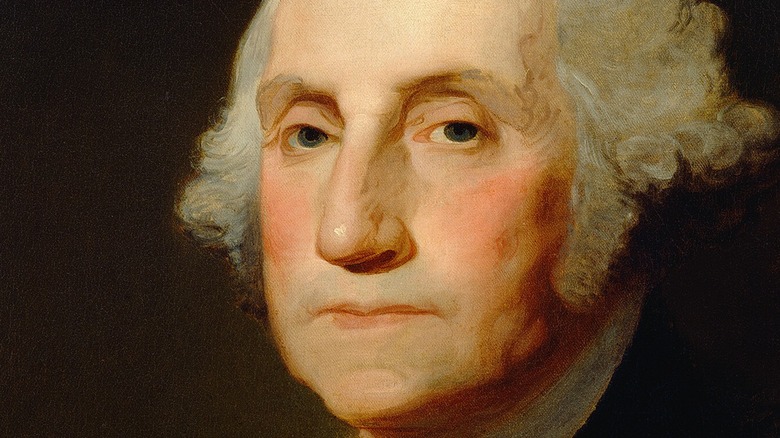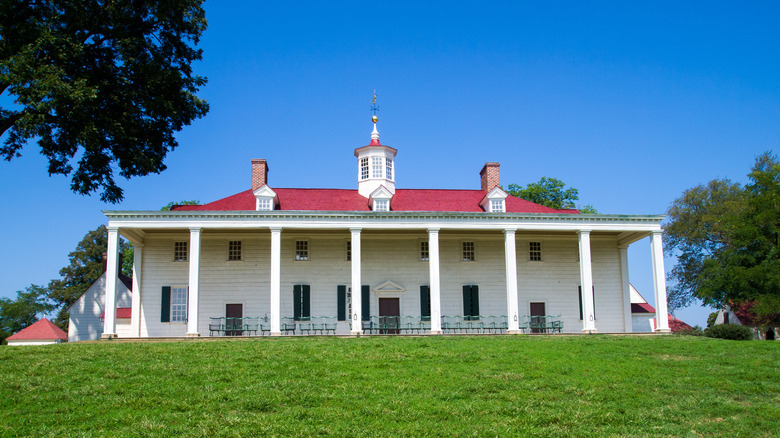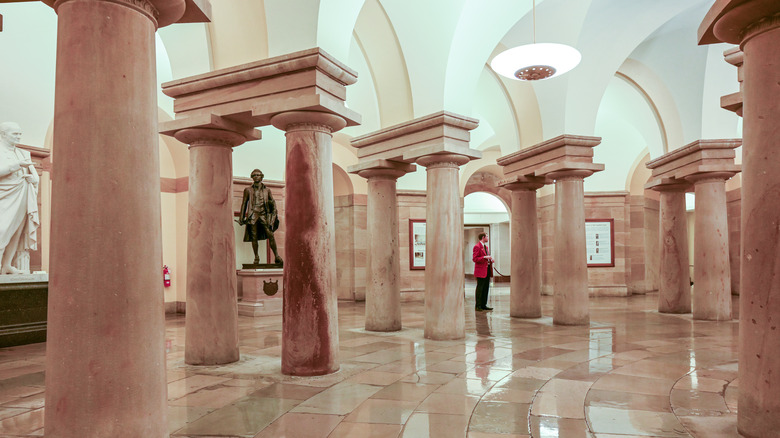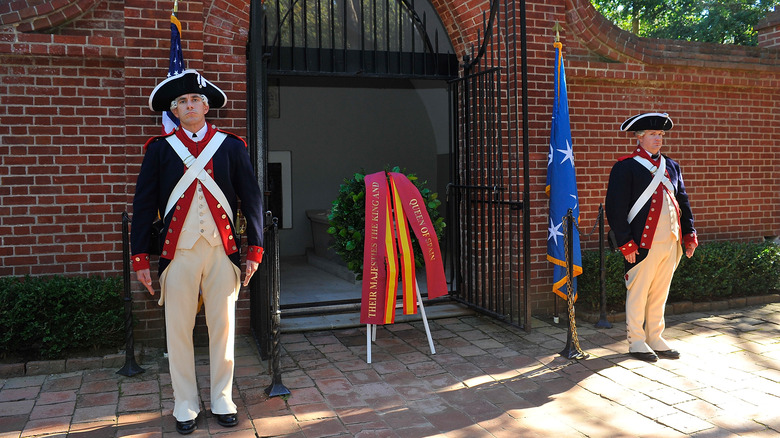Where Is George Washington Buried?
George Washington became the first president of the United States in 1789, according to the White House official site. He had proved himself to be a great leader during the Revolutionary War, and he helped guide the country through its early days as a nation. Washington served two terms as president before retiring from politics in 1796. He rejected the idea of running for a third term, as he was worn out by all of the political infighting, per the United States Senate Historical Office.
In his farewell speech, which was published in a Philadelphia newspaper, the Daily American Advertiser, Washington expressed his concern about the threats facing the young nation. He warned about the dangers political parties and regional interests presented to the nation. After leaving office, Washington retired to Mount Vernon, his estate in Virginia. But he didn't get to enjoy his retirement for long. Washington died there on December 14, 1799, at the age of 67.
Washington died suddenly at Mount Vernon
Washington's death came swiftly and unexpectedly. The end started with a sore throat he first experienced on December 13, 1799, according to the Mount Vernon official site. He woke up that morning feeling sick after having been out riding in bad weather the day before. As the day progressed, Washington's condition worsened. By the next morning, he was struggling to breathe. Several remedies, such as bloodletting, were tried on him, but none proved to be helpful. Washington, knowing the end was near, gave instructions on his burial and requested that his body not be placed into the family vault until three days after his death. He died the evening of December 14.
A funeral for Washington was held at Mount Vernon on December 18. The U.S. government held its own memorial service for the late president on December 26, 1799, in Philadelphia's German Lutheran Church, according to the History, Art & Archives section of the U.S. House of Representatives. Roughly 4,000 people attended this solemn event, including President John Adams.
The battle over Washington's remains
Washington had a vision for his final resting place, which he shared in his will. He asked for a new burial vault to be built on the grounds of his estate in a different location than the existing family vault, which was in need of repairs, per Mount Vernon. Congress, however, had other ideas on what would be a fitting tribute to the nation's first president. It was felt that Washington's remains should be in the Capitol Building, and Martha Washington agreed to have her husband's body relocated.
What form Washington's Capitol resting place should take became a subject of much debate, as were the possible costs associated with such a project. According to U.S. House of Representatives, architects working on the memorial in 1829 considered finishing a crypt that was located under the Capitol's Rotunda (see above). The columns found in this vaulted space were installed in the 1820s to support the room above it (via the Architect of the Capitol). The space also features 13 sculptures, which symbolize the original American colonies.
As the centennial anniversary of Washington's birth approached, the interest in moving his remains to the Capitol increased. It was requested that Washington's remains, along with the remains of his wife, Martha, who died in 1802, be reburied in the nation's capital. It was a descendant of Washington, John A. Washington, who rejected the move, choosing instead to honor the wishes expressed by his great-uncle.
George Washington's final resting place
Despite all of the political wrangling over the body of Washington, his remains stayed at his beloved home. And close to 25 years after his passing, Washington finally got his wish. The new burial vault at Mount Vernon was finished in 1831, and it became the final resting place for Washington, his wife, Martha, and several other family members who had been buried in the old vault, per Mount Vernon. A few years later, the remains of the late president and his wife were moved into two new, separate marble sarcophagi. One simply reads, "Washington" while the other says "Martha, Consort of Washington."
Ever since his death, Washington has remained an important figure for many Americans. So much so that someone once tried to swipe his bones, according to the Washington Times. There aren't many details on this attempted theft, other than they were unsuccessful in their efforts. Visitors to Washington's Mount Vernon can tour the grounds and pay their respects to our first president in his final resting place.



